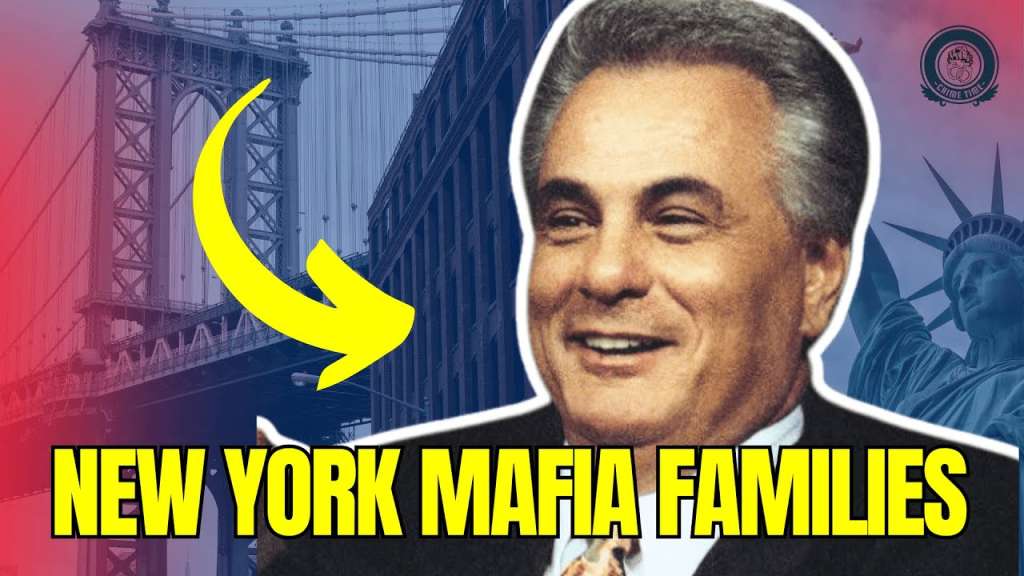New York City’s skyline is a testament to ambition and resilience, but beneath its dazzling lights lies a story of calculated power and intricate networks that have left an indelible mark on its history. At the heart of this narrative are the Five Families—Gambino, Genovese, Lucchese, Bonanno, and Colombo—organizations that have shaped the landscape of organized crime with their strategic influence and carefully orchestrated operations. Their stories are not just about dominance in the underworld; they are a study in loyalty, ambition, and the unrelenting pursuit of power. Each family, with its own unique origins and leadership, operated with a blend of secrecy and force, weaving themselves into the very fabric of the city. Their reach extended beyond illicit enterprises, influencing industries, labor unions, and even the economic pulse of New York itself.
Among these formidable families, the Gambino organization stands as a symbol of calculated authority and adaptability. Rising to prominence under the leadership of Carlo Gambino, the family established itself as a force in racketeering, illegal gambling, and business influence. Carlo’s successor, John Gotti, ushered in a new era of visibility, his charismatic yet defiant approach turning him into a larger-than-life figure in the 1980s. His flamboyance drew public fascination but also relentless scrutiny from law enforcement, leading to a high-profile downfall that altered the family’s trajectory. Despite these setbacks, the Gambino legacy continues, though operating with far less visibility, proving that power in organized crime is not always defined by public spectacle but by quiet, calculated endurance.
In contrast, the Genovese family has long been regarded as the most disciplined and tactically astute of the Five Families. Founded by Lucky Luciano, the architect of the modern crime syndicate, the family built its empire on structure and discretion. Later, under the leadership of Vincent “The Chin” Gigante, the Genovese organization cemented its reputation for strategic evasion, with Gigante famously feigning mental illness to avoid prosecution. Unlike some of their counterparts, the Genovese family’s influence was rooted in careful maneuvering rather than brash displays of power. Their grip on labor racketeering and financial schemes allowed them to maintain dominance while keeping a low profile—an approach that has ensured their endurance even in the face of evolving law enforcement strategies.
The Lucchese family, on the other hand, leveraged its control over the New York garment district and construction industry, demonstrating a unique ability to intertwine legitimate business with organized operations. Tommy Lucchese, the mastermind behind its expansion, maintained a smooth yet firm approach, prioritizing efficiency and economic dominance over unnecessary conflict. By deeply embedding themselves into the city’s labor force, the Lucchese family ensured a steady stream of influence and financial gain. Even as leadership changed over the decades, their business acumen remained at the core of their operations, proving that power in organized crime often lies in strategic infiltration rather than brute force.
While some families thrived on strategic expansion, others, like the Bonanno and Colombo families, were plagued by internal strife. The Bonanno family, under the authoritative rule of Joseph Bonanno, achieved early success but suffered from deep internal conflicts that culminated in the infamous “Banana War.” This internal power struggle exposed the volatility of unchecked ambition, leading to a loss of stability that left the family vulnerable to law enforcement crackdowns. Similarly, the Colombo family, founded by Joseph Profaci and later propelled into the limelight by Joe Colombo, endured its own brutal internal wars. Colombo’s bold move to establish a public civil rights organization drew both admiration and attention, but it also disrupted the delicate balance that had long kept the family’s operations in check. These struggles serve as a stark reminder that power, when mismanaged or contested, can unravel even the most formidable of empires. The Five Families’ saga is more than just a story of influence—it is a reflection of the fragile nature of leadership, the relentless pursuit of control, and the inevitable consequences of ambition in the ever-changing landscape of power.
source

